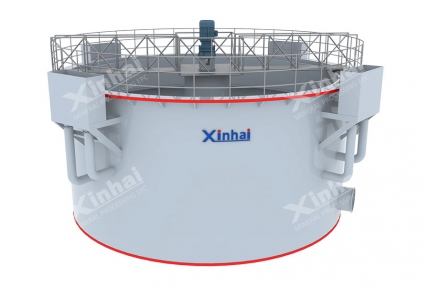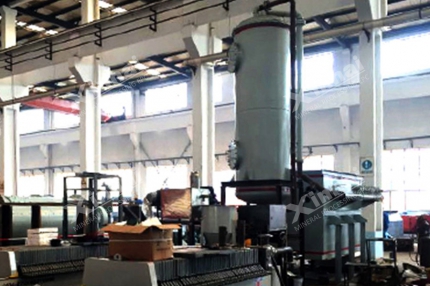The test data provided by the ore samples in the beneficiation test is an important basis for the design of the beneficiation process. In order to make the data of mineral processing test more accurate, there are many requirements in the process of selecting ore samples. Today, the editor will take you to understand how to select representative, suitable particle size and different types of ore samples.
Use the table of contents below to navigate through the guide:
01How to choose a representative ore sample?
When selecting ore samples, it is generally necessary to consider the long-term development of the mine and whether it is consistent with the nature of the deposit. Therefore, the following three points should be done when selecting ore samples:

1. Long-term development
The selected ore samples should not only represent the current situation of the deposit, but also consider the situation of the ore within several years of mining of the deposit, which is expected to remain basically the same. Normally, a very representative sample of ore should be selected for the entire deposit or the mining area of the deposit. If the sampling conditions are insufficient, the main ore that will be processed within the next 5-10 years of the concentrator's production can also be selected as the test sample. The ore samples of non-ferrous metal mines and chemical mines should be more than 5 years old.
2. Consistency
The basic situation of the ore sample should be basically consistent with the deposit. The measurement criteria include the chemical composition, mineral composition, structure and structure of the ore, the occurrence state of useful and harmful elements, the distribution and occurrence state of the components available for comprehensive recovery, etc.
Select samples whose physical and chemical properties of the ore are consistent with the basic conditions of the mining range of the ore deposit. Physical aspects include ore density, hardness, looseness, compressive strength, viscosity, humidity, etc., and chemical aspects include oxidation degree, soluble salt content, etc. At the same time, the selection of samples still needs to consider the scope of future mining of the deposit, which is basically consistent with it.
Finally, the average grade and grade fluctuation of the main components of the ore sample, the ratio of minerals of different types and grades, etc. should be considered, which should be roughly the same as the ratio of the same kind of ore reserves in the ore deposit, or the ratio of the ore sent to the mine for several years of mining. The proportions are about the same.

3. Take more samples
The ore samples to be selected may include ore samples from different positions such as the ore body project floor surrounding rocks and interlayer rocks in addition to the ore deposits.
02How to determine the particle size of an ore sample?
In the beneficiation test, there are certain requirements on the particle size of the mineral sample, usually the particle size of the mineral sample in the laboratory is 50-0mm or 100-0mm. In semi-industrial experiments and industrial experiments, the particle size of the sample is determined according to the requirements of the beneficiation method, process flow and laboratory equipment. The requirements for sample particle size in tests such as functional index tests follow the specific requirements put forward by the experimental unit.
03How to choose different types of ore samples?
Normally, ore samples are selected in the form of staged sampling. A large number of ore samples are selected from the early stage of deposit mining, and a small number of ore samples can be selected as verification samples in the later stage. If the ore reserves of the deposit are not large and the production time is short, there is no need to consider sampling in stages. Specific ore sample selection should also pay attention to:
1. Ore samples should be selected from different ore bodies and ore sections to meet different beneficiation experiments. If the actual sampling process does not have the collection conditions or does not need to be collected separately, then the mixed ore samples will be used for the beneficiation test of the later mixed ore samples.
2. When the material composition characteristics and ore properties of the ore are quite different, they should be sampled separately according to their different types and grades to meet the beneficiation test of a single sample or a beneficiation test of a mixed sample.

3. When there is a large difference in the main components of the ore and the associated beneficial and harmful components, it should be selected according to the type and grade change, combined with the mining design plan, and select samples from different ore deposit segments for beneficiation tests.
4. In order to make more reasonable use of limited mineral resources, if there is a certain amount of off-surface ore in the deposit, it should be sampled separately to comprehensively evaluate the possibility and rationality of its recycling.
5. If the ore body, surrounding rocks, rock interlayers and dikes contain precious, scattered elements and other components that can be comprehensively recovered, it should be selected on the basis of comprehensive research on the occurrence and spatial distribution of its associated components. A representative ore sample was used for comprehensive recovery pilot studies.
6. A certain proportion of ore body floor surrounding rock and interlayer rock samples should also be selected for beneficiation experiments. In addition, a certain number of high-grade ore samples and near-mine surrounding rock samples should be taken so that the experimental research unit can adjust the possible grade deviation of the ore samples Or meet the temporary needs during the experiment.

Through the above methods, we can select different types of ore samples that are more representative and more suitable for mineral processing tests, providing direct basis for the reasonable determination of subsequent mineral processing process design, equipment selection, product plans, technical and economic indicators, etc., and can also Provide data basis for the concentrator to successfully achieve design targets and obtain economic benefits after it is put into operation. Therefore, in order to obtain an accurate mineral processing test basis, the editor suggests that professional institutions or expert opinions can be consulted when selecting ore samples, and a specialized experimental research unit undertakes the mineral processing test, so as to obtain scientific and accurate mineral processing test data.


 marketing@ytxinhai.com
marketing@ytxinhai.com  0086 13810327080
0086 13810327080 






































































































 CHAT
CHAT MESSAGE
MESSAGE






